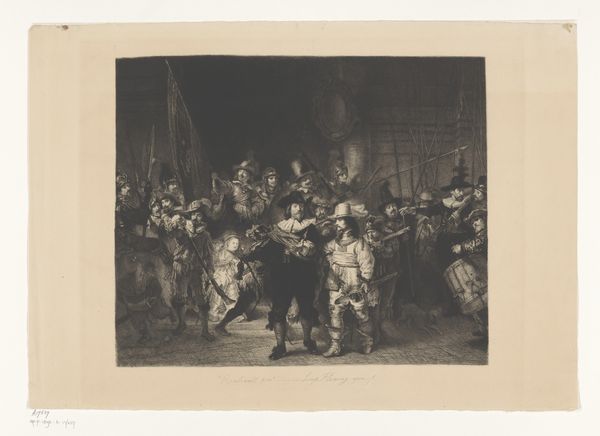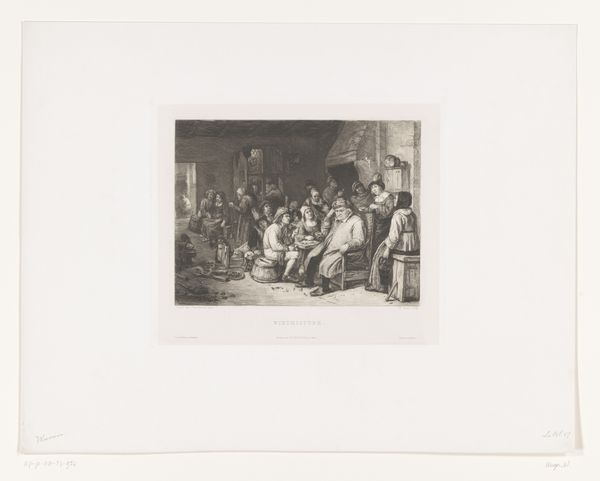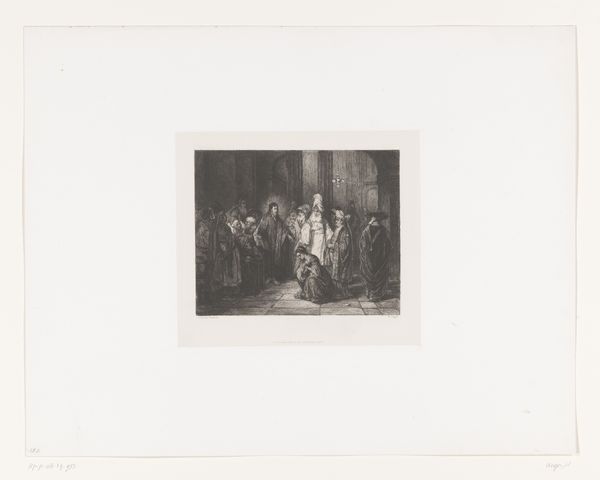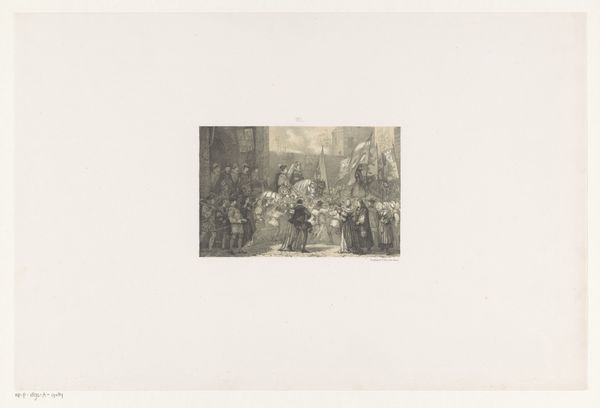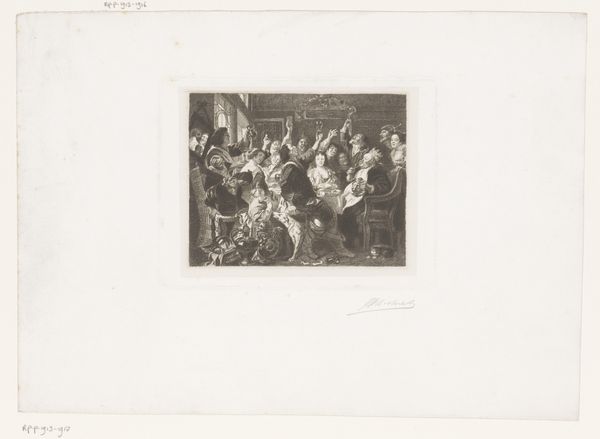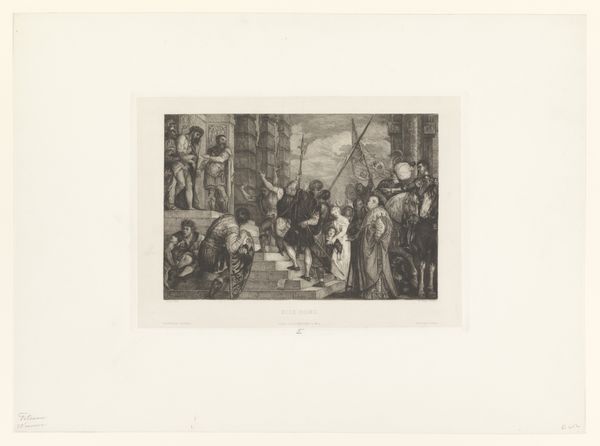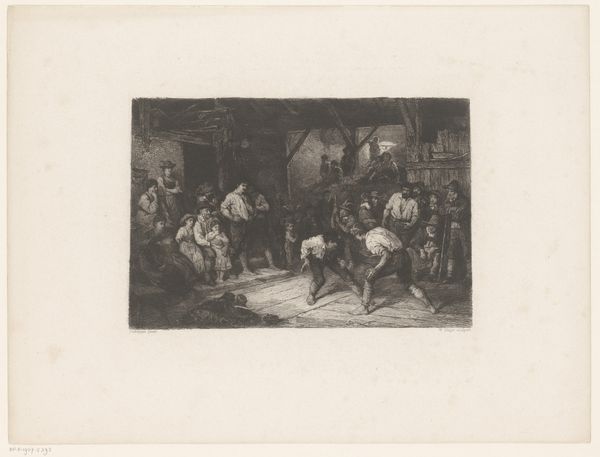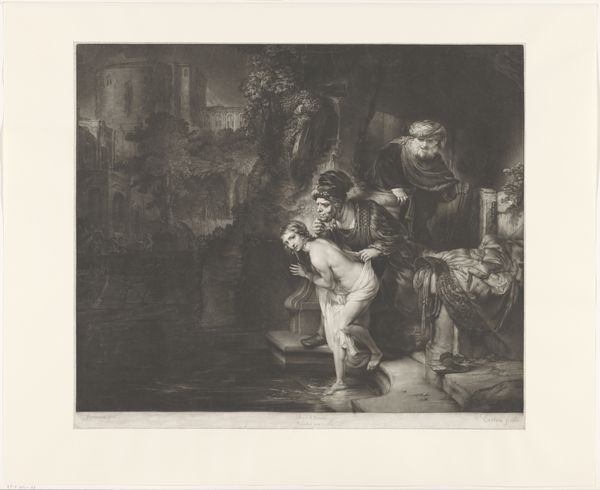
Dimensions: height 359 mm, width 415 mm
Copyright: Rijks Museum: Open Domain
This is William Unger's print "Nachtwacht" made with etching and possibly engraving. The intricate detail suggests that Unger, a prominent figure in the etching revival of the 19th century, employed a painstaking process, using needles and acids to incise lines into a metal plate, which was then inked and pressed onto paper. The density of the lines creates a rich tonal range, capturing the dramatic lighting and textures of the original painting. Consider the labor involved: each line a deliberate act, demanding precision and control. This contrasts with the speed and reproducibility of industrial printing, highlighting the value placed on individual skill and artistic interpretation. Unger's print transforms Rembrandt's dynamic painting into a more intimate, accessible object, one that could be collected and studied. This speaks to the changing landscape of art consumption and the rise of the art market, where craft-based reproduction played a vital role. By appreciating the labor and skill embedded in this print, we gain a deeper understanding of its value as both a work of art and a historical document.
Comments
No comments
Be the first to comment and join the conversation on the ultimate creative platform.
